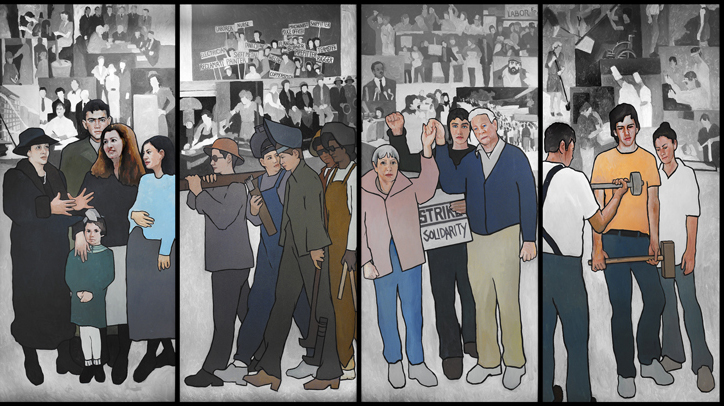
The former Main Labor Department mural, Judy Taylor, via The Portland Press Herald
As of Monday, a 36-foot mural in the Maine Department of Labor was removed by order of Governor LePage because of its perceived "anti-business" bias. The mural, created by artist Judy Taylor, depicted scenes from Maine's labor history and was criticized by local business leaders for being overtly "pro-union" and therefore inappropriate for a taxpayer-funded building. Debate over the mural, of course, appears to be an extension of the intense debates about the status of the labor movement nationwide, but particularly in states like Wisconsin and Illinois, where public-sector unions have experienced considerable political setbacks following the conservative "wave" election of 2010.
Recent comments
2 years 29 weeks ago
2 years 44 weeks ago
2 years 44 weeks ago
2 years 50 weeks ago
3 years 4 weeks ago
3 years 4 weeks ago
3 years 4 weeks ago
3 years 6 weeks ago
3 years 6 weeks ago
3 years 6 weeks ago